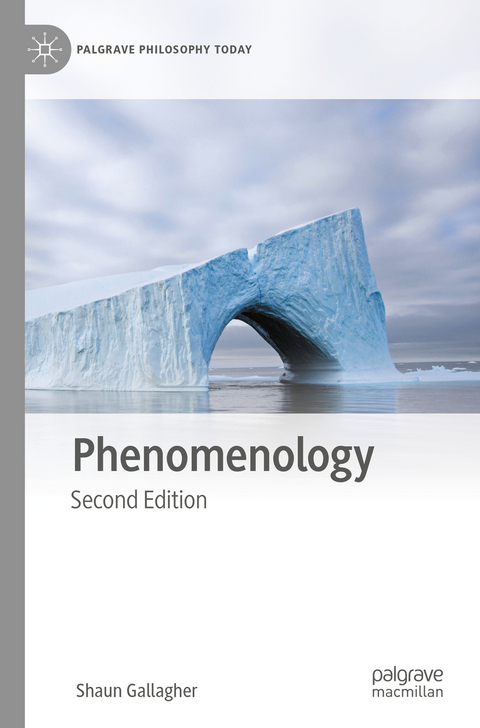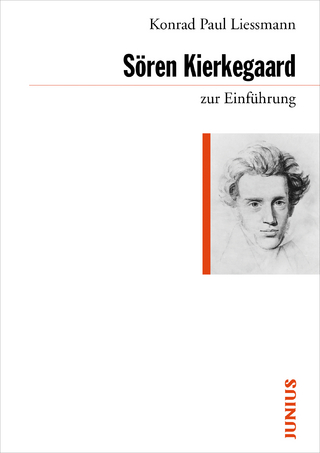
Phenomenology
Springer International Publishing (Verlag)
978-3-031-11585-1 (ISBN)
With a focus on phenomenological methods, this new edition of Shaun Gallagher's highly regarded textbook provides a comprehensive introduction to phenomenology considered as a philosophical and interdisciplinary practice. Phenomenology 2e encompasses both the classic 20th century explications of phenomenology as well as recent developments in the practical and scientific uses of phenomenology.
Key features:
- Explores debates about naturalizing phenomenology and reviews recent extensions of phenomenological methodology. Relates the phenomenological analysis of intentionality to discussions of enactive perception.
- Includes a discussion of the phenomenology of performance and a new chapter on critical phenomenology.
- Examines specialized topics in phenomenology, including Husserl's concept of hyletic data, embodiment, time-consciousness, action, intersubjectivity and self-consciousness.
- Each chapter concludes with suggestions for further reading.
This book is essential reading for all undergraduate and graduate philosophy students taking courses in phenomenology. It is also ideal for use on cognitive science modules that incorporate a phenomenological perspective.
Shaun Gallagher, PhD, Hon DPhil., is the Lillian and Morrie Moss Professor of Excellence in Philosophy at the University of Memphis, and Professorial Fellow at the University of Wollongong. He has held Honorary Professorships at Copenhagen, Durham, and Tromso, visiting positions at Cambridge, Lyon, Paris, Berlin, Oxford and Rome and was Humboldt Foundation Anneliese Maier Research Fellow (2012-18).
1 What Is Phenomenology?.- 1.1 Phenomenologies.- 1.2 Historical Background and Foreground.- 1.3 Death and Reincarnation.- 1.4 A Different Phenomenology.- 1.5 Further Reading.- References.- 2 Naturalism, Transcendentalism, and a New Naturalizing.- 2.1 Mathematics and Psychology.- 2.2 Naturalistic and Transcendental Accounts.- 2.3 The Lifeworld.- 2.4 Turning the Tables.- 2.5 The New Naturalism.- 2.6Further Reading.- References.- 3 Phenomenological Methods and some Retooling.- 3.1 The Natural Attitude.- 3.2 The epoché.- 3.3 The Phenomenological Reductions.- 3.4 Some Natural Ways of Using Phenomenology.- 3.4.1 Formalizing Phenomenology.- 3.4.2 Neurophenomenology.- 3.4.3 Front-Loaded Phenomenology.- 3.4.4 A Note on Microphenomenology.- 3.4.5 Summary.- 3.5 Retooling the Eidetic Reduction.- 3.6 Further Reading.- References.- 4 Intentionalities.- 4.1 Husserl's Theory of Intentionality.- 4.2 Noesis: Noema.- 4.3 Neo-Pragmatic Conceptions of Intentionality.- 4.4 Enactive Intentionality.- 4.5 Further Reading.- References.- 5 Embodiment and the Hyletic Dimension.- 5.1 Hyle: A Sensational Concept.- 5.2 The Critique of Husserl's Theory.- 5.3 Hyle and Quale.- 5.4 Embodiment and Hyletic Experience.- 5.5 Deepening the Enactive Interpretation.- 5.6 Further Reading.- References.-6 Time and Time Again.- 6.1 Experiencing Time.- 6.2 Husserl's Analysis.- 6.3 The Ubiquity of Temporality.- 6.4 A Dynamical Interpretation.- 6.5 The Intrinsic Temporality of Action.- 6.6 One More Time: Primal Impression and Enactive Structure.- 6.7 Further Reading.- References.- 7 Self and First-Person Perspective.- 7.1 A Tradition of Disagreements.- 7.2 Prereflective and Minimal Aspects of Self.- 7.3 The Sense of Ownership.- 7.4 IEM.- 7.4.1 Schizophrenia.- 7.4.2 Somatoparaphrenia.- 7.4.3 Experimental Challenges to IEM.- 7.4.4 The NASA Robot Experience.- 7.5 The L-Theory of IEM and First-Person Perspective.- 7.6 One Final Challenge: Seeing Without an I.- 7.7 Further Reading.- References.- 8 Action,Performance, and Narrative.- 8.1 Action and Agency.- 8.2 A Phenomenology of Performance.- 8.3 Mindful Performance.- 8.4 An Enhanced Meshed Architecture.- 8.5 Action and Narrative.- 8.6 Further Reading.- References.- 9 Intersubjectivity and Second-Person Perspective.- 9.1 Transcendental Intersubjectivity.- 9.2 Being-With Others.- 9.3 Standard Views of Social Cognition.- 9.4 Phenomenological Approaches to Social Cognition.- 9.4.1 Developmental Studies.- 9.4.2 Behavioral and Phenomenological Evidence.- 9.4.3 Evidence from Dynamic Systems Modeling. 9.5 The Narrative Scale in Social Cognition.- 9.6 Revisiting Transcendental Intersubjectivity.- 9.7 Further Reading.- References.- 10 Critical Phenomenology.- 10.1 Social and Political Phenomenologies.- 10.2 What Is Critical Phenomenology?.- 10.3 Fanon on the Phenomenology of the Historico-Racial Body Schema.- 10.4 Throwing like a Phenomenologist.- 10.5 The Phenomenology of Incarceration.- 10.6 Critiques of Critical Phenomenology.- 10.7 Further Reading.- References.
| Erscheinungsdatum | 25.08.2022 |
|---|---|
| Reihe/Serie | Palgrave Philosophy Today |
| Zusatzinfo | XIX, 213 p. 2 illus. |
| Verlagsort | Cham |
| Sprache | englisch |
| Maße | 155 x 235 mm |
| Gewicht | 367 g |
| Themenwelt | Geisteswissenschaften ► Philosophie ► Philosophie der Neuzeit |
| Schlagworte | action • Embodiment • intentionality • Intersubjectivity • Phenomenology • Psychologism • self |
| ISBN-10 | 3-031-11585-6 / 3031115856 |
| ISBN-13 | 978-3-031-11585-1 / 9783031115851 |
| Zustand | Neuware |
| Informationen gemäß Produktsicherheitsverordnung (GPSR) | |
| Haben Sie eine Frage zum Produkt? |
aus dem Bereich


